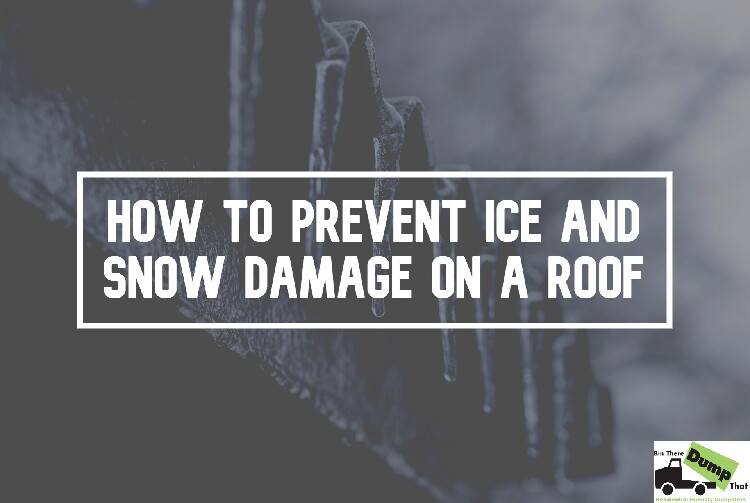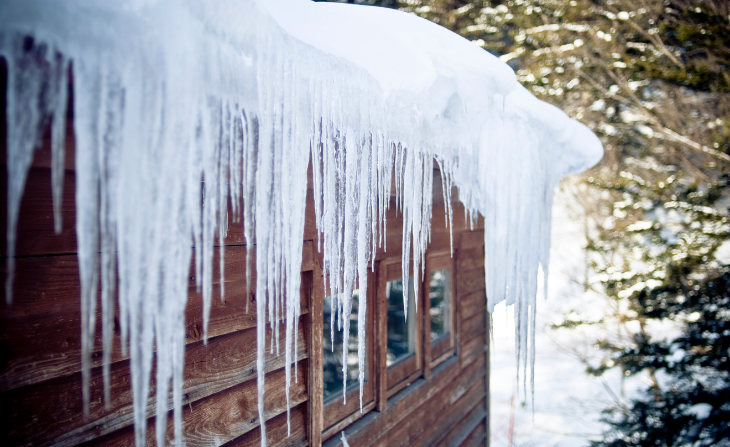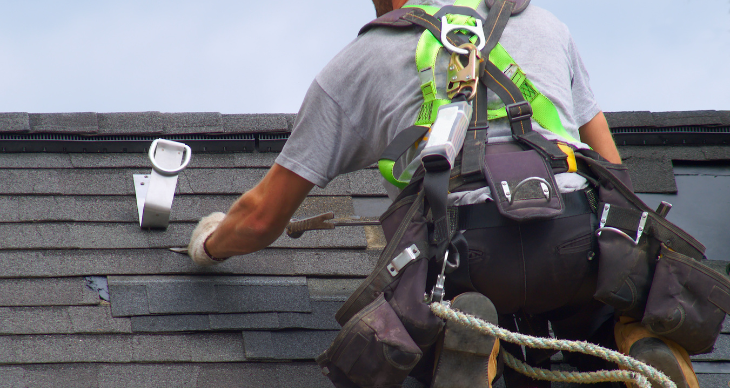
No matter how fun snow can be, everybody who has ever had to deal with snow and ice damage knows it's simply not worth it. A snowball fight or building snowmen and making snow angels is awesome. What isn't awesome is dealing with a cracked and leaking roof, dodging huge icicles, and just hoping your rood will survive another season.
In order to know how to prevent this kind of damage, you need to know what ice and snow actually do to your roof. There are three ways you can end up with severe ice and snow damage on your roof. These are:
First, ice dams. During the winter, snow accumulates on your roof. However, there is some heat that slowly escapes through your roof, and outside to the snow. This then leads to the first thin layer of snow melting, which then freezes if temperatures go low enough. These can also happen when there are abrupt changes in temperature. Now, this melted snow also goes down to the edges of your roof, which can freeze and then lead to a blockage, i.e. the dam actually forms. This then prevents snow from falling off the roof, leading to greater and greater accumulation of snow at one single spot. This then can lead to greater pressure on specific points, leading to cracks, damage, leaks, and even collapse.
Then, much simpler to explain, is a general collapse. Due to a weak point in your roof's structure, the accumulated snow becomes too much for a weak roof to bear. This can make it collapse. Add some ice to this, and an ice dam, and you get a disaster waiting to happen.
Finally, cracks can occur because of fast temperature drops and changes. Water may seep between your shingles and small cracks within your roof. The water that seeps through the cracks might freeze and when it freezes, it expands, leading to several cracks in the roof.

Now, the above dangers are very real even if you don't have a lot of snowfall during the year. If the damage is severe enough you won't have a choice except hiring the experts and getting professional residential roof repairs. However, before you have to spend that much money and time, we suggest you do some of the necessary activities below. Both those that you should do before winter starts, and those that are there to help you handle the snow that's already arrived.
First things first - clean out your gutters and downspouts. Twigs, leaves, debris, junk - all of this can lead to your gutters getting blocked, and overflowing. Once it freezes, you can disastrous results to your roof, leading to serious freezing and over encumbrance. So, roll up your sleeves, and get to work.
Then, install heating mats and cables. These can help melt the ice and snow before it even shows up, preventing any further damage, and stopping the above issues to occur.
Finally, inspect your roof. This might actually be the most important part since it can save you from the most serious type of damage. Namely, a professional inspector can check for any structural weaknesses in your roof, helping you avoid potential collapses. Also, you yourself can check out and replace weak or cracked shingles that might fall off or crack. Missing shingles are a very serious weak point. But be sure to be safe and to inform yourself what you need to know before starting roof repairs.

So, winter is here, and you have to deal with the snow and the ice that is already here. Well, there are couple of things you can do. First things first, - again, your gutters and downspouts. Inspect them on a daily basis, break up any ice that has built up. Also, check for debris, try to get rid of it as much as you can.
Use a telescoping snow rake and remove the excess snow on your roof. Your roof is most likely built to withstand a certain amount of snow, but removing excess snow regularly will help form too much pressure building up. Also, stay safe when doing winter work - don't climb up on your roof during the winter, black ice is an accident waiting to happen.

If you want to avoid and prevent ice and snow damage, you need to be throughout, you need to be mindful of the dangers, and, simply put, not be lazy. Keep your roof inspected, install heating mats, clear out your gutters, and finally, get a shovel and get to work.
Author Bio: Ron is a hobby designer and a DIY enthusiast, and, above all, a very blessed father of two. Besides that, he has a strong passion for writing. If he is not working he enjoys being outside with his family. Hiking, bike riding, and barbecuing are always a thing for him. In the evening, he likes to watch documentaries or build something with kids in their Lego corner.
Friendly, professional customer service, plus fair pricing, equals value.